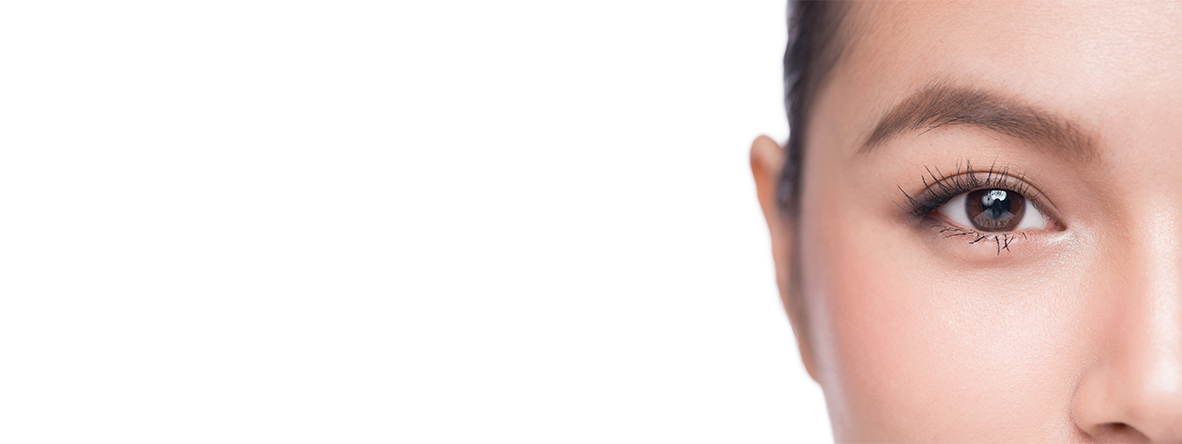Lower Eyelid surgery, or Blepharoplasty, is a procedure to remove fat, usually along with excess skin and muscle from lower eyelids to correct puffy "bags" below your eyes.

Frequently Asked Questions
How is the eyelid surgery performed?
The surgeon makes incisions following the natural lines of your eyelids, just below the lashes in the lower lids. The incisions may extend into the crow's feet or laugh lines at the outer corners of your eyes. Working through these incisions, the surgeon separates the skin from underlying fatty tissue and muscle, removes excess fat, and often trims sagging skin and muscle. The incisions are then closed with very fine sutures.
If you have a pocket of fat beneath your lower eyelids but don't need to have any skin removed, your surgeon may perform a transconjunctival blepharoplasty. In this procedure the incision is made inside your lower eyelid, leaving no visible scar. It is usually performed on younger patients with thicker, more elastic skin.
Will the lower eyelid surgery result in permanent scarring?
Scars are a result of any surgical procedure. The incisions made to accomplish the goals of the procedure are barely visible after several months as they are placed within the normal creases and folds of the lower eyelids. In patients who only need removal of fat from the lower eyelids, the incision can be made on the inside of the eyelid, and will therefore result in an invisible scar.
How long does the lower eyelid procedure take?
Usual length of operating time is one to three hours. There is little discomfort during or after the procedure.
Will I need Anesthesia for the lower eyelid surgery?
The operation is usually done under local anesthesia, with sedation, as an outpatient. Some surgeons prefer to use general anesthesia; in that case, you'll sleep through the operation.
Am I a good candidate for lower eyelid surgery?
The best candidates for eyelid surgery are men and women who are physically healthy, psychologically stable, and realistic in their expectations. Most are 35 or older, but if baggy eyelids run in your family, you may decide to have surgery at a younger age.
A few medical conditions make blepharoplasty more risky. They include thyroid problems such as hypothyroidism and Graves' disease, dry eye or lack of sufficient tears, high blood pressure or other circulatory disorders, cardiovascular disease, and diabetes. A detached retina or glaucoma is also reason for caution; check with your ophthalmologist before you have surgery.
Before Your Procedure
Shower and shampoo the morning of surgery. Wash your eyebrows and thoroughly remove all eyelid cosmetics. Do not reapply cosmetics to your eyelids or face. Skin should be healthy and free of any irritation around the planned surgery site. If you have been using glue or tape regularly to form a fold, it is important to discontinue this for a few days prior to the operation. These agents can cause irritation to the skin that will interfere with the surgery. If skin irritation or sunburn is excessive, the operation may need to be rescheduled to a later date. After recovery, you will need a responsible adult to take you home.
After Your Procedure
Rest as much as possible when you return home. It is normal to feel drowsy or sluggish the entire day. You may feel dizzy or uncomfortable upon standing up or walking, so be sure that support from a person or object is nearby.
Keep your head and chest elevated on at least two to three pillows at all times.
Sleep on your back rather than your side. (Sleeping on your side will cause you to become more swollen on that side.)
Take the pain medication as needed and as directed. Avoid alcohol beverages. *DO NOT take pain medication on an empty stomach.
Keep cool eye pads on for 48 hours - except when eating or getting up to use the bathroom. Dip eye pads in ice water as much as possible, as this will help reduce the swelling and bruising.
It is OK to shower. Pat your face dry. Do not rub your eyes.
Do not strain your eyes for 48 hours (No watching TV, reading, etc).
If you use soft contact lenses, DO NOT wear them for at least two weeks after surgery. If you use hard contact lenses, DO NOT wear them for at least three weeks after surgery. Then slowly build up your wearing time. If any eye irritation occurs, stop wearing your contacts and contact your doctor.
Be careful in air conditioning or wind for the first two to three days after surgery. Your eyes will be sensitive and may dry out easier. You may use Artificial Tears as needed.
If you are a smoker, DO NOT smoke for one to two weeks after surgery.
Before & After Photo Gallery
View Before & After Images of lower eyelid procedures performed by Dr. Cho.
Schedule a Consultation With Dr. Cho or Dr. Schulz
Please call us at (808) 522-4370 or email us